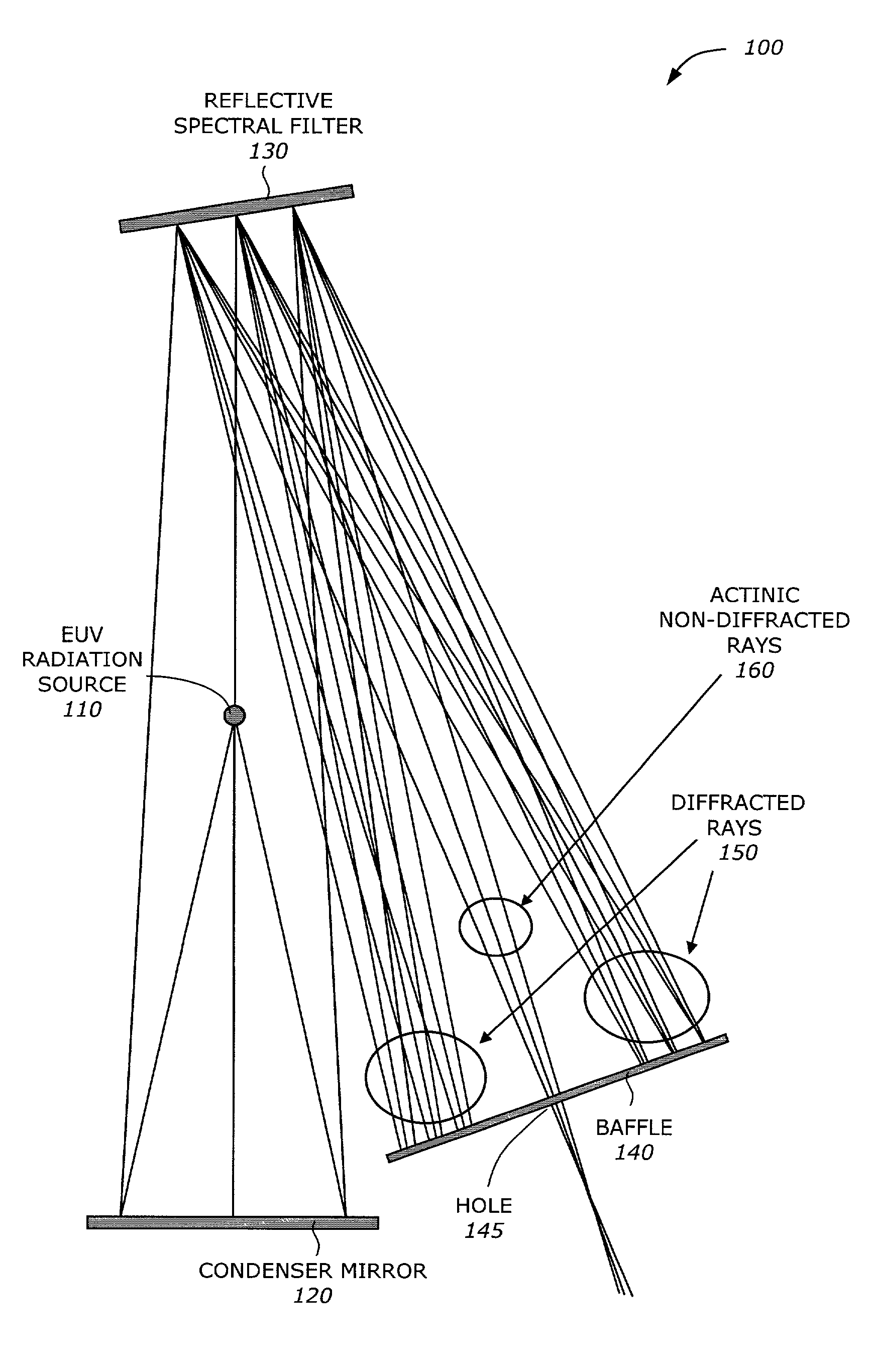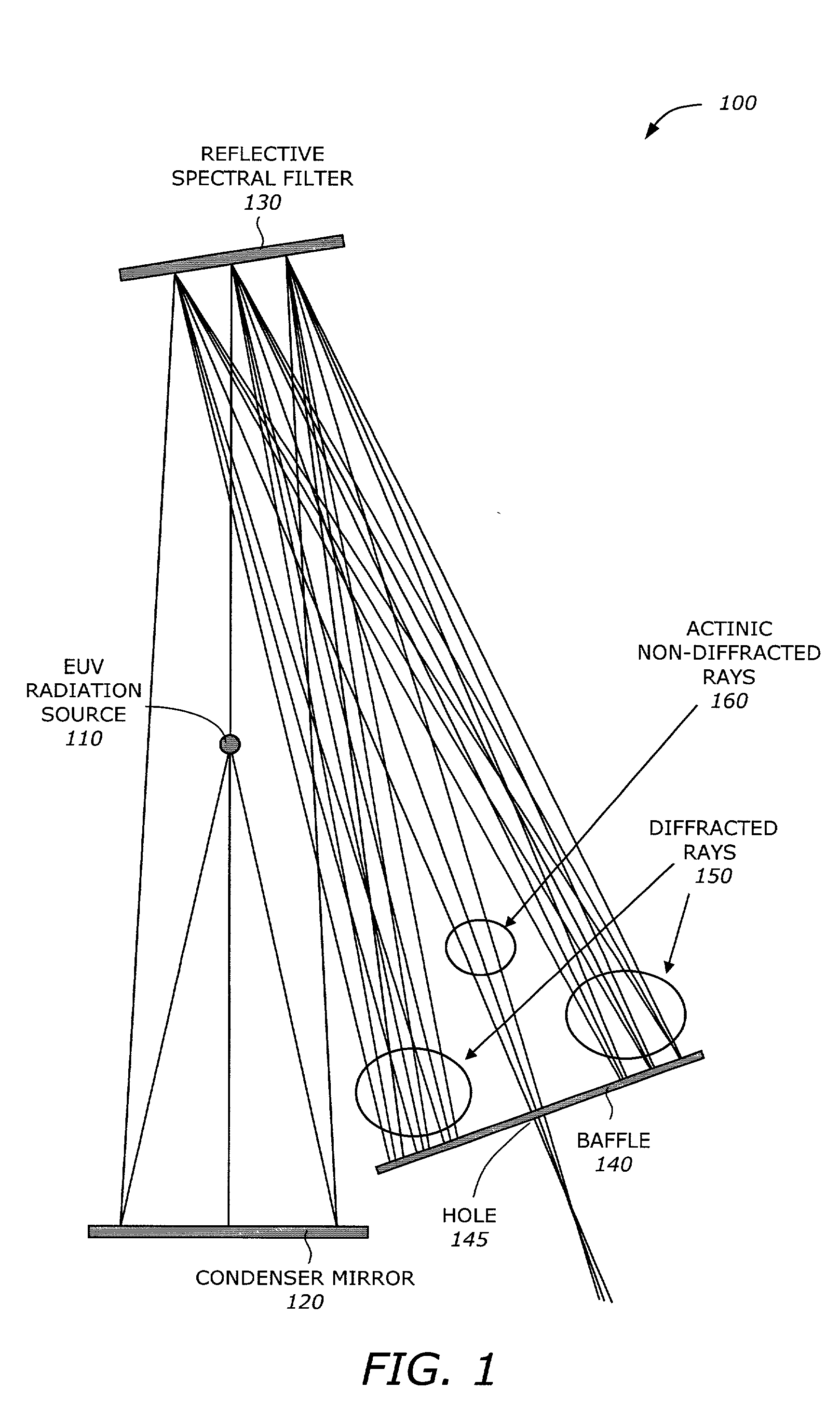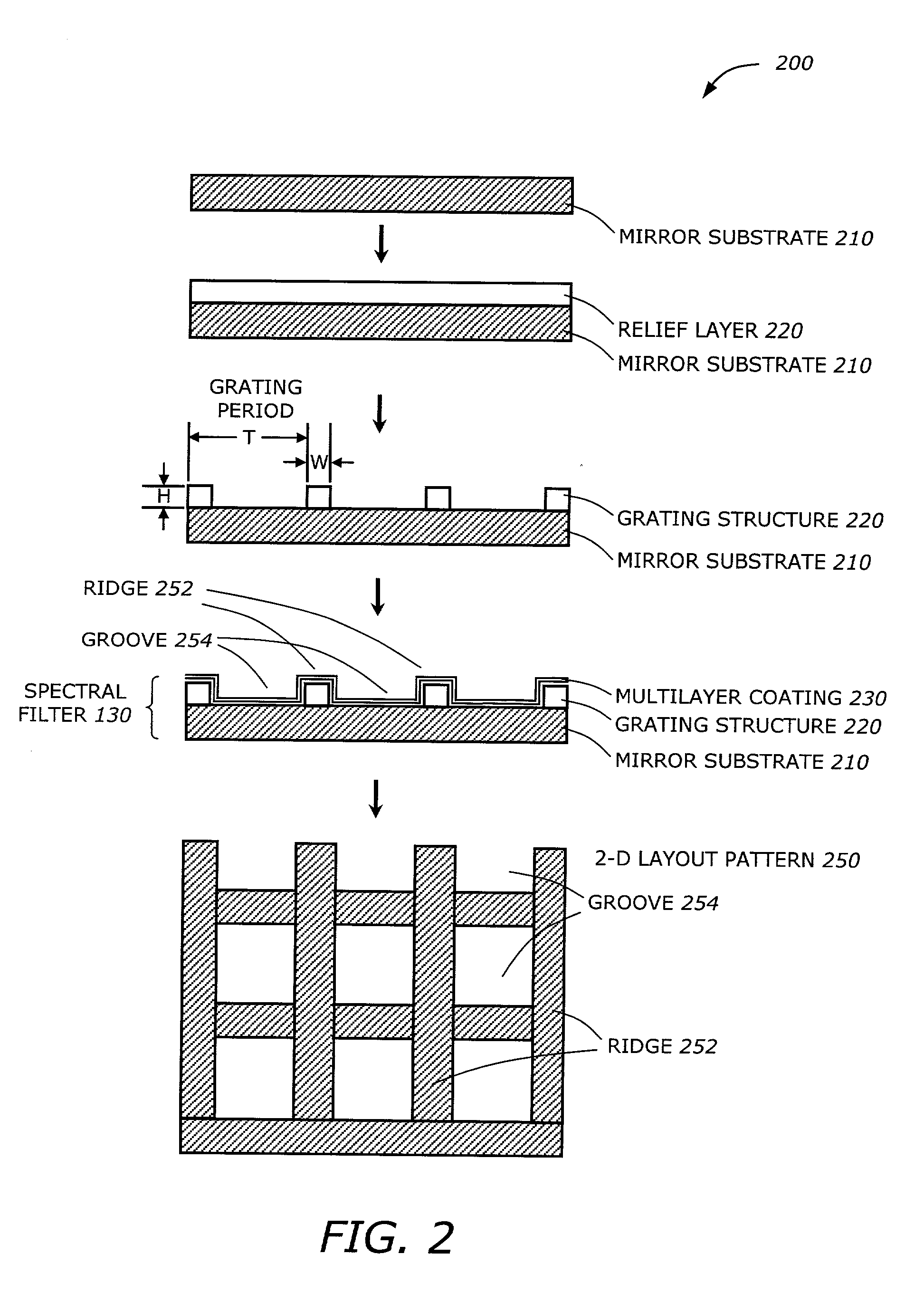Reflective spectral filtering of high power extreme ultra-violet radiation
a spectral filtering and ultra-violet radiation technology, applied in the field of lithography, can solve the problems of unreasonably distorting the mask and mirror used in euv imaging tools, low efficiency of techniques, and passing only about 50% of desired wavelength
- Summary
- Abstract
- Description
- Claims
- Application Information
AI Technical Summary
Problems solved by technology
Method used
Image
Examples
Embodiment Construction
[0015] The present invention is a technique for efficient spectral filtering of EUV radiation. The spectral filter includes a grating structure and a multi-layer coating. The multi-layer coating is designed to reflect a narrow band around a short wavelength (e.g., 13.4 nm) and also reflects long wavelengths (e.g., greater than approximately 60 nm). The grating structure has a grating period responsive to the long wavelength band. The multi-layer coating is formed by layers of materials having high and low atomic numbers (e.g., Mo and Si) interspersed by layers of a compound (e.g., SiC). Regions of the longer wavelength rays are removed from the optical path by diffraction. The actinic rays have a wavelength much shorter than the grating period and undergoes simple reflection. The combined properties of the multi-layer coating and the grating structure generate the desired spectral characteristics.
[0016] In the following description, for purposes of explanation, numerous details are ...
PUM
 Login to View More
Login to View More Abstract
Description
Claims
Application Information
 Login to View More
Login to View More - R&D
- Intellectual Property
- Life Sciences
- Materials
- Tech Scout
- Unparalleled Data Quality
- Higher Quality Content
- 60% Fewer Hallucinations
Browse by: Latest US Patents, China's latest patents, Technical Efficacy Thesaurus, Application Domain, Technology Topic, Popular Technical Reports.
© 2025 PatSnap. All rights reserved.Legal|Privacy policy|Modern Slavery Act Transparency Statement|Sitemap|About US| Contact US: help@patsnap.com



